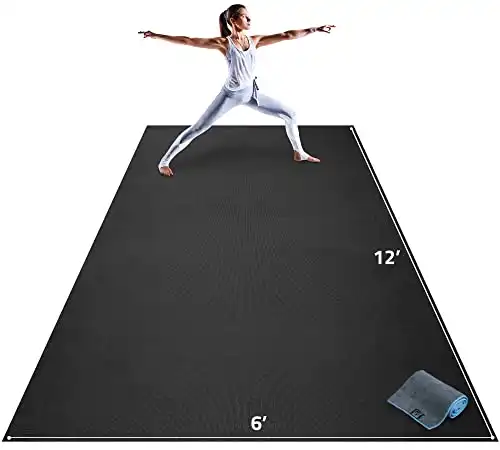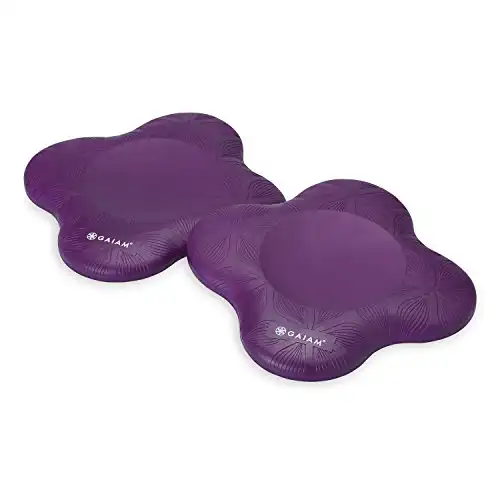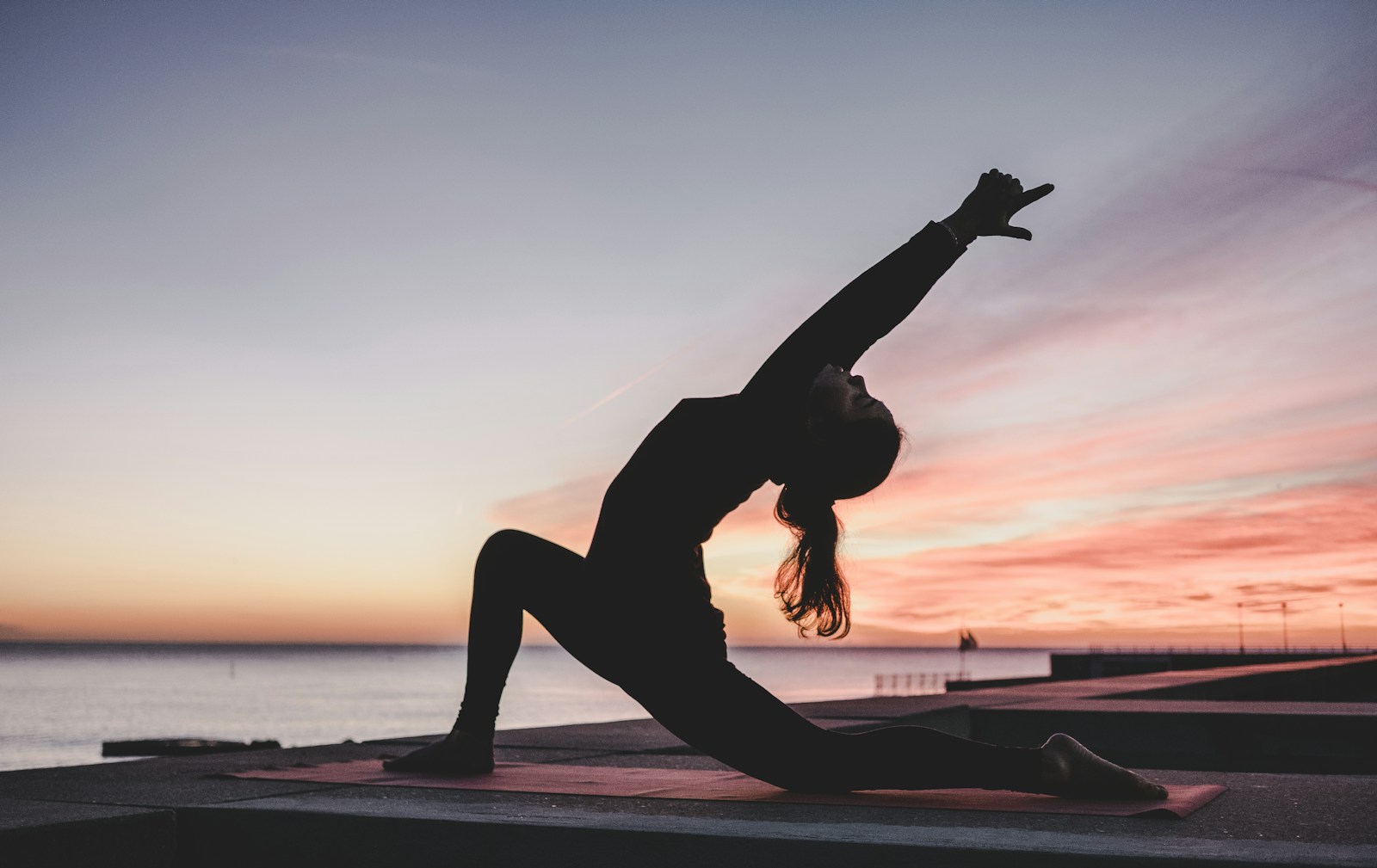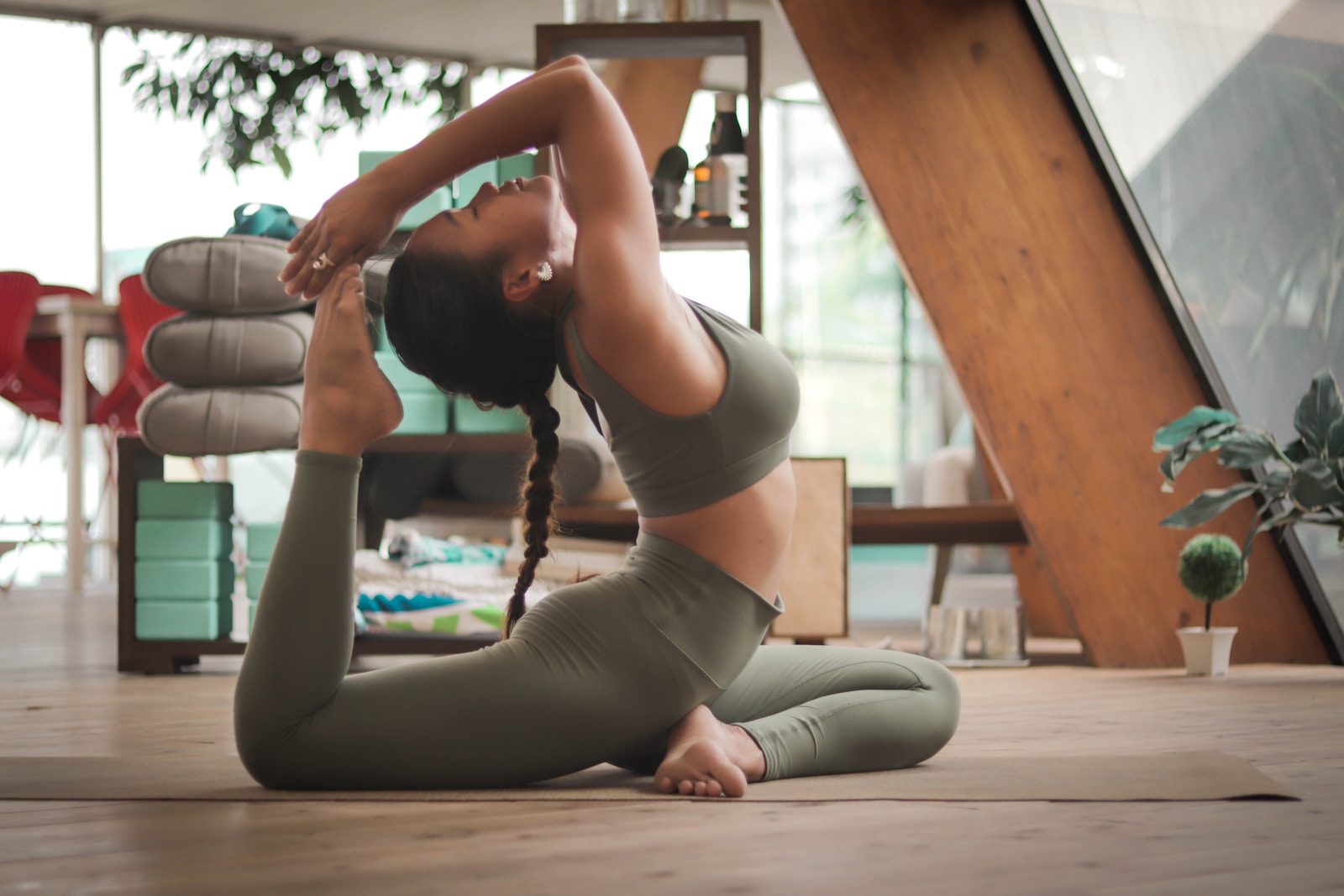
8 Best Yoga Mats for Bad Knees: Protect Your Joints
Some Posts On Our Site May Contain Affiliate Links
Table of Contents
Yoga Mats for Bad Knees: Why You Should Consider a Specific Yoga Mat if you Have Bad Knees

Cushioning: People with bad knees may benefit from using a special yoga mat for several reasons. Yoga involves various poses and movements that require you to place pressure on your knees, such as lunges, kneeling poses, and seated positions.
A yoga mat with extra cushioning provides a softer surface, reducing the impact and pressure on your knees when you’re on the ground. This can make yoga more comfortable and reduce the risk of aggravating knee pain.
Support: Specialized yoga mats are designed to provide better support for your joints. They often have materials that offer a good balance of cushioning and stability, making it easier to maintain proper alignment in your poses. Proper alignment can help prevent strain on your knees and reduce the risk of injury.
Non-Slip Surface: Many yoga mats designed for individuals with joint issues have non-slip surfaces that improve stability and reduce the risk of slipping or sliding during yoga practice. This added grip can be especially important if you have knee problems, as it helps you maintain your balance and avoid putting unnecessary stress on your knees.
Size: Some specialized yoga mats are larger or longer than standard mats, providing more space for your practice. This extra space can be beneficial if you need room to modify poses or use props to support your knees and joints.
Eco-Friendly Options: Some individuals with knee issues may also have sensitivities or allergies. Specialized yoga mats made from eco-friendly, non-toxic materials can be a better choice for those with such sensitivities.
Personal Comfort: Everyone’s body is unique, and what feels comfortable for one person may not be suitable for another. Specialized yoga mats for individuals with knee problems offer a range of features and materials, allowing you to choose one that suits your personal comfort preferences.
In summary, while not everyone with knee issues needs a specialized yoga mat, having one can make the practice more comfortable and safer for those individuals. These mats are designed to address specific concerns related to cushioning, support, grip, and size, all of which can be beneficial for individuals with bad knees or joint problems. However, it’s essential to choose a yoga mat that aligns with your specific needs and comfort level.
Things To Look for in a Yoga Mat if You Have Bad Knees

Thickness: Opt for a mat around 6mm or thicker for better cushioning.
Material: Choose TPE, natural rubber, or cork for cushioning and stability.
Texture: Ensure a non-slip surface to prevent slipping during poses.
Size: Pick a mat large enough to accommodate your whole body comfortably.
Density: Consider high-density foam or rubber for better support.
Gorilla Mat: The Pro Yoga Mat!
What sets this yoga mat apart?
Large Size: Typically measures around 6 feet in length and 4 feet in width.
Thickness: generally thicker than standard mats, providing extra cushioning for joints, including knees.
High-Density Foam: Constructed with high-density foam for durability and stability.
Non-Slip Surface: Designed with a textured surface to prevent slipping during yoga poses.
Multipurpose: Suitable for yoga, Pilates, stretching, bodyweight workouts, and floor exercises.
Durability: Known for its long-lasting performance and ability to withstand regular use.
Easy to Clean: Simple maintenance for daily use and hygiene
Top 8 Yoga Mats For Bad Knees To Prevent Joint Pain
Jade Yoga Mat: Tree-Loving and Odor-Free
Gaiam Essentials: Best Budget Yoga Mat
Manduka Pro Yoga Mat: Best luxury Mat
Sivan Health Extra Thick Yoga Mat: Best for thickness
Feetlu Yoga Mat: Lightweight, Eco-Friendly Comfort
JELS Extra Thick Yoga Mat: Squishy Support for Sensitive Knees
B Mat Strong: Performance and Eco-Friendliness Combined
Gaiam Premium Extra Thick Yoga Mat: Best for versatility
Knee Pads For Yoga To Give Extra Support
Knee pads can provide:
- Cushioning: They add an extra layer of cushioning, making poses that involve kneeling or sitting more comfortable and reducing discomfort or pain.
- Joint Support: Knee pads help distribute body weight evenly across the knees, reducing strain on the joint. This is particularly beneficial for individuals with sensitive knees or knee issues.
- Increased Comfort: Knee pads enhance overall comfort during yoga practice, especially during prolonged kneeling or when transitioning between poses involving kneeling or sitting.
- Stability: Some knee pads feature non-slip surfaces, improving stability during poses and preventing hands or knees from slipping, reducing the risk of injury.
- Versatility: Knee pads are useful for activities beyond yoga, such as gardening, cleaning, or other exercises that involve kneeling.
- Modifications: They aid in modifying poses, making them more accessible if you have knee pain or discomfort.
- Pain Prevention: Knee pads can help prevent or alleviate knee pain, making your yoga practice more enjoyable and sustainable, especially if you have knee sensitivities or are recovering from an injury.
Yoga Knee Pads: Top 5 Picks
- Gaiam Yoga Knee Pad: Gaiam is a well-known yoga brand, and their knee pads are designed to provide extra cushioning and support during poses that involve kneeling.
- Bean Products Yoga Knee Pad: Bean Products offers eco-friendly yoga knee pads made from sustainable materials like natural rubber and cotton. They aim to provide both comfort and durability.
- Bigmeda Yoga Knee Pad: Bigmeda Yoga’s knee pad is designed to be dense and supportive, providing cushioning for your knees and elbows during yoga practice.
- Heathyoga Yoga Knee Pad: Heathyoga’s knee pad is made from high-density NBR foam and features a non-slip surface to help you maintain stability during poses.
- ProSource Fit Yoga Knee Pad: ProSource Fit offers a thick knee pad designed to alleviate discomfort during kneeling and provide extra cushioning for sensitive joints.
Best Yoga Poses For Knee Pain
Yoga can be a helpful practice for managing and alleviating knee pain, but it’s important to choose poses that are gentle on the knees and provide support. Here are some of the best yoga poses for knee pain:

Child’s Pose (Balasana): This resting pose stretches the hips, thighs, and ankles while providing gentle pressure on the knees. You can modify it by placing a cushion or folded yoga mat under your knees for extra support.
Supported Bridge Pose (Setu Bandha Sarvangasana): Use a block or cushion under your hips to elevate them slightly in this pose. It gently stretches the quadriceps and provides relief to the knees.
Supine Hand-to-Big-Toe Pose (Supta Padangusthasana): Lie on your back and use a strap to assist in stretching your hamstrings. This reduces tension in the knee area.
Cat-Cow Pose (Marjaryasana-Bitilasana): This dynamic pose helps improve flexibility in the spine and knees. It’s a gentle warm-up for the body.
Chair Pose (Utkatasana): Chair pose strengthens the quadriceps and can help stabilize the knees. Keep your knees aligned with your ankles in this pose.

Warrior II Pose (Virabhadrasana II): This pose strengthens the quadriceps and hamstrings while promoting knee stability. Make sure your front knee is aligned with your ankle.
Legs Up the Wall Pose (Viparita Karani): This restorative pose improves circulation, reduces swelling, and relieves tension in the legs and knees. It’s especially beneficial for those with knee pain due to fluid retention or inflammation.
Supine Bound Angle Pose (Supta Baddha Konasana): Lie on your back and bring the soles of your feet together, letting your knees fall gently outward. This pose opens the hips and stretches the inner thighs with minimal strain on the knees.
Sphinx Pose: This gentle backbend stretches the front of the body, including the hip flexors, with minimal pressure on the knees.
Corpse Pose (Savasana): While not a pose that directly targets the knees, Savasana is essential for relaxation and recovery. It can help reduce overall tension and promote healing.

Always listen to your body and avoid any poses that cause pain or discomfort in your knees. If you have chronic knee issues or are recovering from an injury, it’s advisable to consult with a yoga instructor or physical therapist who can provide personalized guidance and modifications to ensure a safe and effective practice.
You May Also Enjoy





